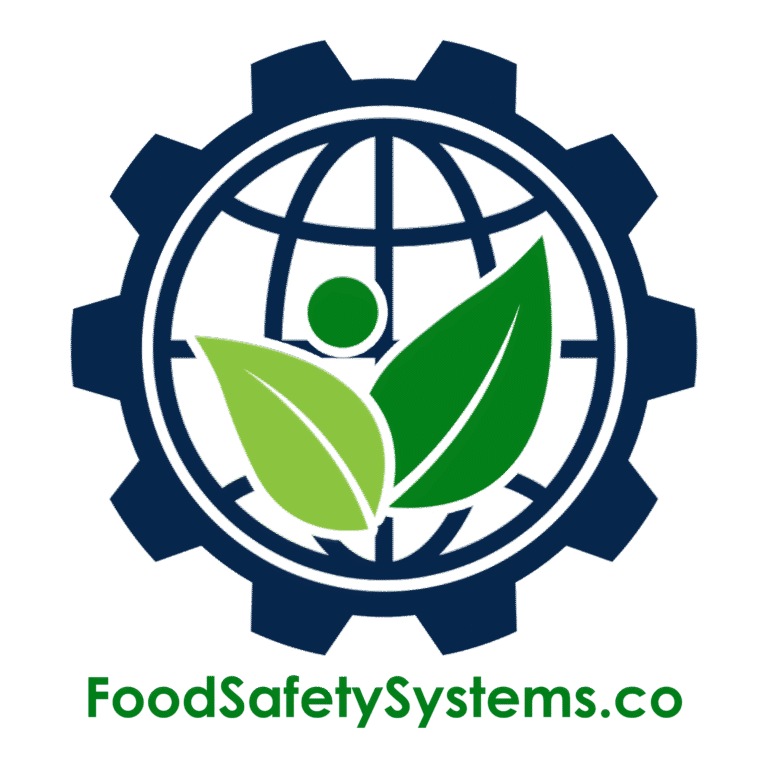Product Design Safety Evaluations

Aligned with FSSC 22000 – ISO-Based Food Safety Management System (FSMS)
Requirement Overview
Under FSSC 22000, organizations must ensure that the design and development of products and processes are controlled to safeguard food safety, meet regulatory obligations, and fulfill customer expectations. This includes planning, validation, and review of new or modified products, ingredients, packaging, or processes to prevent potential hazards or adverse effects on food safety.
A product design safety evaluation is a proactive approach that supports regulatory compliance, consumer protection, and continual improvement by assessing risks early in the product lifecycle.
Key Compliance Objectives
-
✓ Evaluate food safety risks for new or modified products before market release
✓ Ensure products meet applicable legal, regulatory, and customer requirements
✓ Assess risks related to intended use, misuse, allergens, and consumer interaction
✓ Document and retain safety review and approval records
Step-by-Step Compliance Implementation
1. Establish a Product Safety Evaluation Process
-
Process Elements:
-
• Appoint qualified personnel from R&D, QA, and regulatory teams
• Create a formal product safety evaluation procedure linked to FSMS
• Integrate safety reviews into product development stage-gates
Evidence to Maintain:
-
• Documented SOP for product design and safety review
• Process maps outlining approval flow
• Assigned roles and responsibilities for evaluation
- • Appoint qualified personnel from R&D, QA, and regulatory teams • Create a formal product safety evaluation procedure linked to FSMS • Integrate safety reviews into product development stage-gates
- • Documented SOP for product design and safety review • Process maps outlining approval flow • Assigned roles and responsibilities for evaluation
2. Conduct Risk-Based Safety Assessments
-
Assessment Criteria Should Include:
-
• Intended use, preparation, and end-consumer groups
• Ingredient safety (e.g., allergens, toxins, raw materials)
• Process-related hazards (e.g., cross-contamination, CCPs)
• Labelling accuracy, shelf-life validation, and packaging safety
• Compliance with applicable legislation (e.g., FDA, EU, Codex, FSMA)
Evidence to Maintain:
-
• Risk assessment checklists and reports
• Material Safety Data Sheets (MSDS)
• Allergen risk analysis and packaging compatibility assessments
- • Intended use, preparation, and end-consumer groups • Ingredient safety (e.g., allergens, toxins, raw materials) • Process-related hazards (e.g., cross-contamination, CCPs) • Labelling accuracy, shelf-life validation, and packaging safety • Compliance with applicable legislation (e.g., FDA, EU, Codex, FSMA)
- • Risk assessment checklists and reports • Material Safety Data Sheets (MSDS) • Allergen risk analysis and packaging compatibility assessments
3. Approve Product for Market Release
-
Approval Requirements:
-
• Sign-off by QA, food safety team, or authorized manager
• Verification of hazard controls and process validation
• Documentation confirming legal and regulatory compliance
Evidence to Maintain:
-
• Signed design safety evaluation forms
• Change control and validation logs
• Certificates of compliance, product specifications, and testing reports
- • Sign-off by QA, food safety team, or authorized manager • Verification of hazard controls and process validation • Documentation confirming legal and regulatory compliance
- • Signed design safety evaluation forms • Change control and validation logs • Certificates of compliance, product specifications, and testing reports
4. Reassess Upon Change or Trigger Events
-
Trigger Events:
-
• Product design changes or reformulation
• New supplier, raw material, or process changes
• Recalls, complaints, or regulatory findings
• Updates in relevant food laws or standards
Evidence to Maintain:
-
• Updated safety evaluations and risk assessments
• Records of internal reviews tied to change control
• Reports from investigations related to consumer safety
- • Product design changes or reformulation • New supplier, raw material, or process changes • Recalls, complaints, or regulatory findings • Updates in relevant food laws or standards
- • Updated safety evaluations and risk assessments • Records of internal reviews tied to change control • Reports from investigations related to consumer safety
Common Audit Findings & Recommended Fixes
| Audit Finding | Recommended Action |
|---|---|
| No documented product safety evaluation | Establish a formal procedure and integrate with FSMS |
| Incomplete or generic risk assessments | Customize evaluations to specific product and market risks |
| Missing compliance evidence | Retain test results, certificates, and legal documentation |
| No reassessment after changes | Link change control with mandatory design safety reviews |
Auditor Verification Checklist (FSSC Context)
During an FSSC 22000 audit, be prepared to present:
-
• A documented product and process design control procedure
• Risk-based product safety evaluations for new or changed products
• Regulatory compliance records (FDA, EU, etc.)
• Evidence of sign-off and validation by qualified personnel
• Reassessment documentation tied to product or process changes
Implementation Roadmap
Build Your System
-
✓ Develop SOP for product safety evaluations under FSMS
✓ Assign cross-functional review teams
Evaluate and Approve
-
✓ Perform structured hazard analysis during development
✓ Obtain regulatory and internal approvals before launch
Monitor and Reassess
-
✓ Link change control to product safety re-evaluations
✓ Track consumer complaints and incidents for redesign triggers
Document and Retain
-
✓ Keep records for regulatory defense and audit readinesss
✓ Archive safety reports, risk assessments, and approval forms
Why This Matters?
-
✓ Prevents unsafe or non-compliant products from reaching the market
✓ Supports regulatory compliance and customer trust
✓ Strengthens proactive risk management and continuous improvement
✓ Reduces liability, recall exposure, and reputational risk
Support Tools Available
Food Safety Systems provides:
-
✓ Product safety evaluation templates and workflow guides
✓ Risk assessment tools customized for food products
✓ Compliance checklists for FDA, EU, Codex, and FSMA
✓ Training modules on product design safety and regulatory integration
Privacy Policy | Terms of Service
Powered by interlinkIQ.com, Developed by ITBlaster.net, Owned and Operated by Consultare Inc. Group, A Compliance Company. All Rights Reserved.







